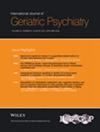A Cross Sectional and Longitudinal Assessment of Neuropsychiatric Symptoms and Brain Functional Connectivity in Patients With Mild Cognitive Impairment, Cerebrovascular Disease and Parkinson Disease
Abstract
Introduction
Mild Behavioral Impairment (MBI) is characterized by later-life emergent and persistent neuropsychiatric symptoms (NPS) in older adults without dementia, serving as a potential precursor to various forms of dementia. This study explores the association between NPS and functional connectivity (FC) of the default mode network (DMN), executive control network (ECN), and salience network (SN) across three cohorts: mild cognitive impairment due to AD (MCI), cerebrovascular disease (CVD), and Parkinson's disease (PD). Additionally, the effect of CNS medication on NPS-FC associations was explored.
Methods
Participants were recruited from the Ontario Neurodegenerative Disease Research Initiative (ONDRI). NPS were evaluated using the Neuropsychiatric Inventory Questionnaire (NPI-Q). We used dual regression to generate subject-specific whole-brain FC maps of the DMN, ECN, and SN. Using permutation testing we examined the association between NPS scores and FC maps at baseline (n = 349) and over a 2-year period (n = 225), controlling for age, sex, and years of education. A post-hoc linear model was used to assess the effect of CNS medication on each significant NPI-FC association within each group.
Results
In the MCI group (n = 73), baseline disturbed nighttime behavior was positively correlated with functional connectivity (FC) between the anterior sensorimotor network. Longitudinally (n = 46), appetite changes were positively associated with FC between the anterior SN and fusiform gyrus. Disinhibition and apathy correlated with FC between the posterior SN and DMN. In the CVD group (n = 144), baseline anxiety was negatively associated with FC within the DMN and between the right ECN and DMN in the left hippocampus. Longitudinally (n = 99), agitation/aggression changes were negatively associated with FC between the right ECN and left anterior cerebellum. Irritability, the most common symptom in both MCI and CVD, did not have identifiable neural correlates, possibly due to its complexity or analysis limitations. In the PD group (n = 132), baseline disturbed nighttime behavior was positively associated with FC between the right ECN and DMN in the precuneus and left ECN and fusiform gyrus. Longitudinally (n = 80), changes in nighttime behavior correlated with FC between the left ECN and DMN in the precuneus. CNS medications had no effect on NPI-FC associations in the MCI group. In the CVD group, the absence of CNS medications was linked to decreased right ECN FC. In the PD group, Parkinson's medications changed the direction of the NPI night-time score-FC correlation at both baseline and the 2-year assessment, with higher scores associated with reduced left ECN FC in medicated individuals.
Conclusions
In conclusion, our study highlights the critical role of the DMN, ECN, and SN in processing neuropsychiatric symptoms (NPS) across MCI, CVD, and PD populations. We found significant associations between NPS and functional connectivity (FC) within and between these networks. MCI and PD showed positive associations with FC, particularly for disturbed nighttime behavior, while CVD exhibited negative associations, notably with anxiety and agitation. Although irritability was common in both MCI and CVD groups, its neural correlates remain unclear, emphasizing the need for further investigation. These findings support existing literature and pave the way for targeted therapeutic approaches, such as brain stimulation, to alleviate NPS. Additionally, the complex role of CNS medications in modulating NPS and FC warrants further investigation.


 求助内容:
求助内容: 应助结果提醒方式:
应助结果提醒方式:


